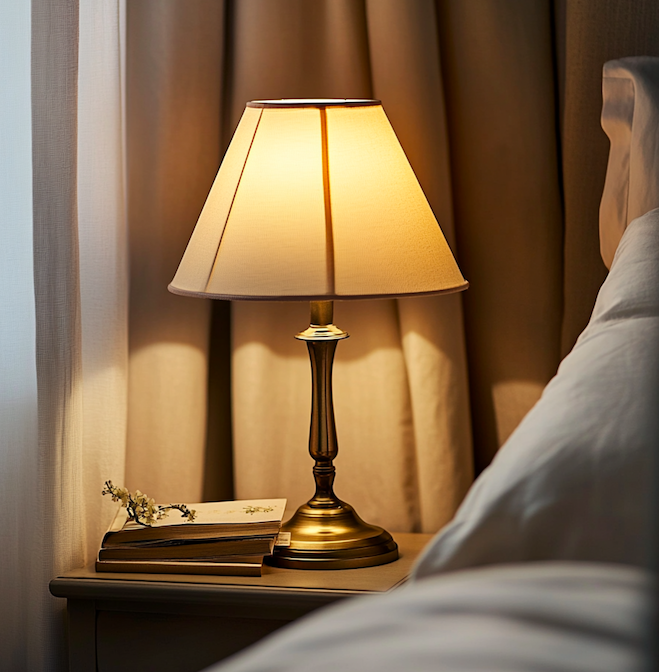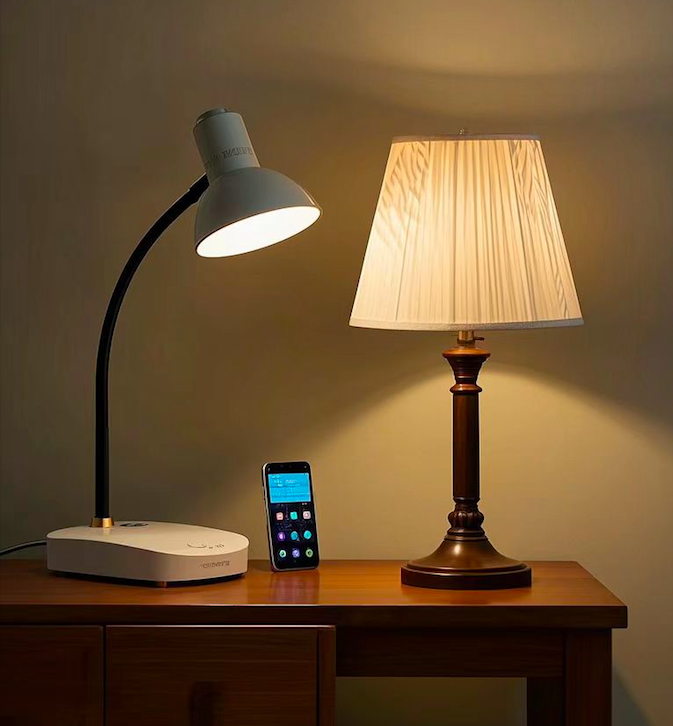Choosing the right desk lamp is essential for both work and leisure. Whether you need bright light to focus on your tasks or warm glow to create a cozy ambiance, understanding the differences between LED desk lamps and traditional lamps will help you make an informed decision.
This blog compares LED vs. traditional lamp options, focusing on energy savings, light quality, and lifespan. Let’s explore which lamp will best suit your needs.
1. Energy Saving: LED Light vs. Traditional Light
Energy efficiency is a major factor for both home and office use. Here’s how they compare:
LED Desk Lamps:
- Up to 80% more efficient than traditional incandescent light bulbs.
- Emit minimal heat, converting most energy into light.
- Consume around 5 to 10 watts for the same brightness that an incandescent bulb uses 60 watts to produce.
- Lower electricity bills over time.
Example: A 10-watt LED desk lamp running for 8 hours a day will consume 2.4 kWh per month. In contrast, a 60-watt incandescent bulb will consume 14.4 kWh in the same period.
Traditional Lights:
- Incandescent bulbs are highly inefficient, converting most energy into heat rather than light.
- Fluorescent bulbs are more efficient than incandescent bulbs but still consume more energy compared to LEDs.
Professional Tip:
For buyers seeking to reduce electricity bills in offices, investing in LED desk lamps is a long-term cost-saving solution. Choose lamps with adjustable brightness for further energy optimization.
2. Light Quality: LED Light vs. Incandescent Light Bulb Health
Lighting quality affects productivity and eye comfort. Here’s how LEDs and traditional lights differ:
LED Desk Lamps:
- Provide flicker-free light with minimal blue light emission, reducing eye strain.
- Offer adjustable color temperatures ranging from cool white for tasks to warm white for relaxation.
- Many models feature dimmable settings to control brightness.
Example: Using an LED desk lamp with adjustable color temperature (2700K to 6500K) allows you to customize lighting for studying, working, or reading.
Traditional Lights:
- Incandescent bulbs produce warm light, often preferred for reading corners and bedrooms.
- Fluorescent lights may flicker and emit higher levels of blue light, which can lead to eye strain.
Professional Tip:
For buyers prioritizing eye health, recommend LED desk lamps with flicker-free technology. If buyers are sensitive to blue light, choose models with warm white light settings.
3. Lifespan and Durability: LED vs. Incandescent Efficiency
Lifespan plays a major role in the overall cost of lighting. Here’s how the options compare:
LED Desk Lamps:
- Last up to 50,000 hours or more.
- Designed with durable materials and heat dissipation systems.
- Reduced maintenance costs due to infrequent replacements.
Traditional Lights:
Incandescent bulbs typically last around 1,000 hours.
Fluorescent lights may last between 7,000 to 15,000 hours but often require frequent ballast replacements.
Example: A home office using a LED desk lamp for 5 hours a day will last over 27 years before needing replacement. In contrast, incandescent lights may need replacement every few months.
Professional Tip:
For bulk buyers or corporate offices, LED desk lamps reduce replacement costs and waste, making them an eco-friendly choice.
4. Comparison Table: LED Desk Lamp vs. Traditional Light
|
Feature |
LED Desk Lamp |
Incandescent Light |
Fluorescent Light |
| Energy Efficiency | High (5-10W) | Low (60W) | Medium (15-20W) |
| Lifespan (Hours) | 50,000+ | 1,000 | 7,000-15,000 |
| Light Quality | Adjustable, Flicker-Free | Warm, Fixed Temperature | Flickers, Harsh Light |
| Heat Emission | Low | High | Medium |
| Eco-Friendly | Yes | No | Moderate |
| Initial Cost | Moderate | Low | Moderate |
| Maintenance Cost | Low | High | Medium |
5. Additional Factors to Consider
- Smart features: Many LED desk lamps offer touch controls, timers, and memory settings.
- Design choices: LEDs feature sleek, modern designs, while incandescent lamps are often used in classic or decorative fixtures.
- Environmental impact: Unlike fluorescent lamps, LEDs contain no mercury and are recyclable.
Pro Tips:
When recommending products to retailers or wholesalers, suggest adding a variety of LED desk lamps with smart features. Highlight their eco-friendly features for sustainable branding.
6. Conclusion: Which One Should You Choose?
If energy saving, long life, and customizable lighting are your top priorities, then LED desk lamps are the best choice. They provide excellent lighting quality with minimal maintenance costs.
For decorative purposes or occasional use, incandescent lamps provide a warm ambiance. However, they are not cost-effective for daily use.
Final advice: Choose an LED desk lamp for your home office, study area, or commercial workspace. They are energy-efficient, durable, and great for eye comfort.




